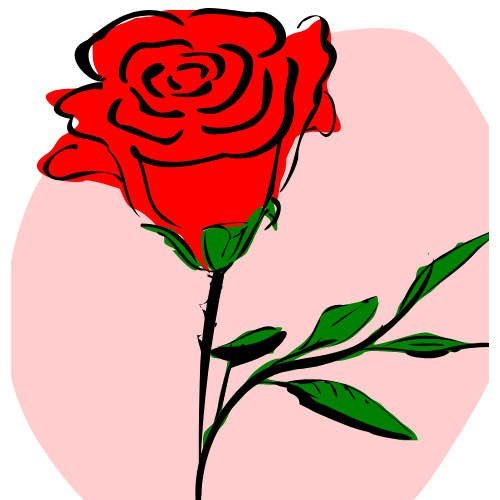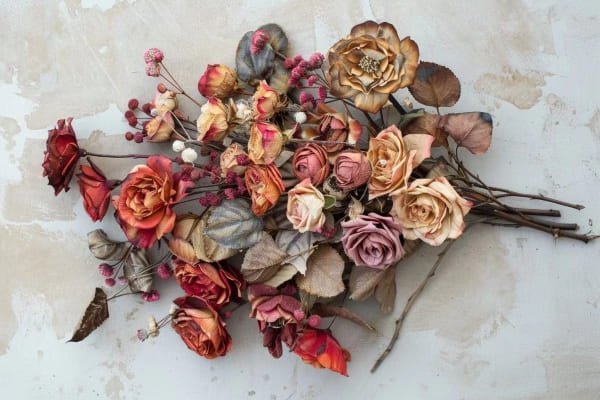Dried flowers have gained popularity not only for their aesthetic appeal and longevity but also for their alignment with sustainable living practices. They offer an eco-friendly alternative to fresh flowers, reducing waste and environmental impact. This guide explores various sustainable practices involving dried flowers, including sourcing, preparation, usage, and disposal, to help you incorporate them into your lifestyle in an environmentally responsible manner.
The Environmental Impact of Fresh Flowers
Before delving into sustainable practices with dried flowers, it's essential to understand the environmental impact of the fresh flower industry. The cultivation and transportation of fresh flowers involve significant resource use and carbon emissions. Pesticides and fertilizers used in flower farming can harm ecosystems, and the energy-intensive process of cooling and shipping flowers globally contributes to greenhouse gas emissions. Additionally, fresh flowers have a short lifespan, often leading to considerable waste.
Benefits of Dried Flowers
Longevity: Dried flowers can last for months or even years, significantly reducing the need for frequent replacements.
Resource Efficiency: Growing flowers for drying typically requires fewer resources compared to those cultivated for fresh bouquets. This includes less water, energy, and chemical inputs.
Reduced Waste: Unlike fresh flowers that wilt and need to be discarded, dried flowers maintain their beauty and utility for extended periods, minimizing waste.
Versatility: Dried flowers can be repurposed into various crafts and decorations, further extending their lifecycle and reducing the need for new materials.
Sustainable Sourcing of Dried Flowers
Local Sourcing: Purchase dried flowers from local growers to minimize transportation-related carbon emissions. Local flowers are also likely to be fresher and support local economies.
Organic Farming: Choose dried flowers from organic farms that avoid harmful pesticides and synthetic fertilizers. Organic farming practices are better for the environment and result in healthier ecosystems.
Foraging: Collect wildflowers responsibly, ensuring that you do not over-harvest or disturb natural habitats. Always follow local regulations and guidelines for foraging.
Growing Your Own: Cultivate flowers in your garden specifically for drying. This allows you to control the growing conditions and ensures a sustainable and pesticide-free source of dried flowers.
Preparing Dried Flowers
Drying Methods:
- Air Drying: This is the most sustainable method as it requires no additional energy. Simply tie the flowers in small bunches and hang them upside down in a dry, dark, and well-ventilated area. This method works well for flowers like lavender, roses, and eucalyptus.
- Pressing: Press flowers between sheets of paper and place them under a heavy object or in a flower press. This method is ideal for delicate flowers and creates beautiful flat decorations for crafts.
- Silica Gel: While not as eco-friendly as air drying, silica gel can speed up the drying process and preserve the flowers' color and shape. Ensure you reuse the silica gel multiple times to minimize waste.
- Oven Drying: Place flowers on a baking sheet and dry them in the oven at a low temperature. This method is quicker but uses more energy, so it should be used sparingly.
Sustainable Uses for Dried Flowers
Home Decor:
- Bouquets and Arrangements: Use dried flowers to create long-lasting bouquets and arrangements. They can be placed in vases, wreaths, or garlands to decorate your home sustainably.
- Wall Art: Pressed dried flowers can be framed to create beautiful and unique wall art. This not only adds a personal touch to your decor but also reduces the need for new decorative items.
- Potpourri: Combine dried flowers with essential oils, herbs, and spices to create natural and aromatic potpourri. This is a great way to add fragrance to your home without synthetic air fresheners.
Gifts:
- Handmade Crafts: Use dried flowers to make handmade cards, bookmarks, candles, and jewelry. These personalized gifts are thoughtful, eco-friendly, and unique.
- Gift Wrapping: Incorporate dried flowers into your gift wrapping by attaching small bundles to packages. This adds a natural and decorative touch to your gifts and reduces the need for plastic decorations.
Special Occasions:
- Weddings: Dried flowers are perfect for wedding bouquets, boutonnieres, and decorations. They can be prepared well in advance and kept as mementos after the event.
- Parties: Use dried flowers to decorate for parties and celebrations. They can be used in centerpieces, garlands, and table settings, adding a sustainable and elegant touch to any event.
DIY Projects:
- Candle Making: Embed dried flowers in homemade candles for a decorative and aromatic touch. Ensure the flowers are placed away from the wick to avoid any fire hazard.
- Soap Making: Incorporate dried flowers into handmade soaps for added texture and fragrance. Lavender, rose petals, and calendula are popular choices for this purpose.
- Resin Crafts: Dried flowers can be embedded in resin to create unique jewelry, coasters, and decorative items. This preserves their beauty and extends their lifespan.
Sustainable Disposal of Dried Flowers
When dried flowers reach the end of their useful life, it’s important to dispose of them responsibly. Here are some sustainable disposal methods:
- Composting: Dried flowers are organic material and can be added to your compost pile. They will decompose naturally and enrich the soil, completing the cycle of sustainability.
- Recycling: If the dried flowers are part of a larger craft or arrangement, disassemble the components and recycle any paper, glass, or metal parts. Ensure that non-compostable materials are disposed of correctly.
- Repurposing: Before discarding dried flowers, consider if they can be repurposed for another project. Even faded petals can be used in potpourri or added to natural dyes.
Promoting Sustainability in the Flower Industry
Advocacy and Awareness:
- Support Sustainable Brands: Choose to buy from florists and brands that prioritize sustainability. Look for certifications such as Fair Trade, Rainforest Alliance, or Organic to ensure ethical and eco-friendly practices.
- Educate Others: Share the benefits of dried flowers and sustainable practices with friends and family. Encourage them to adopt eco-friendly habits in their floral purchases and decorations.
- Community Involvement: Participate in community gardening and sustainable farming initiatives. Support local farmers and growers who practice sustainable agriculture.
Innovative Practices:
- Eco-Friendly Packaging: When buying dried flowers, opt for sellers who use recyclable or biodegradable packaging. This reduces waste and supports sustainable business practices.
- Upcycling: Repurpose old or unused items to create new dried flower arrangements. This reduces the need for new materials and promotes a culture of reuse.
- Sustainable Floristry: If you’re a florist or involved in the flower industry, adopt sustainable practices in your business. This can include using local and seasonal flowers, minimizing waste, and offering dried flower options to customers.
Conclusion
Dried flowers offer a beautiful, versatile, and sustainable alternative to fresh flowers. By adopting sustainable practices in sourcing, preparing, using, and disposing of dried flowers, you can significantly reduce your environmental impact while enjoying the timeless beauty they bring. Whether you use them for home decor, special occasions, or DIY projects, dried flowers provide an eco-friendly way to celebrate life’s moments and promote a greener future. Embrace the sustainability of dried flowers and contribute to a more sustainable and environmentally conscious world.




